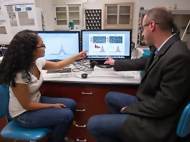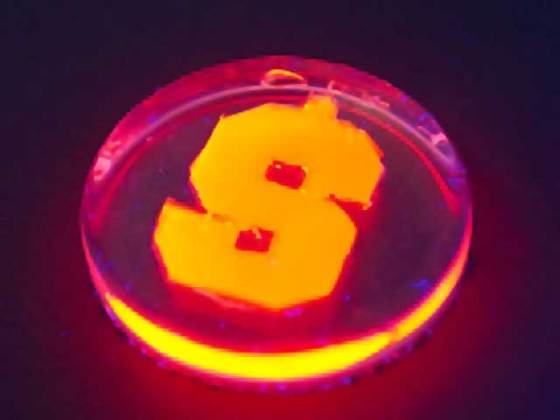Enzymes from fireflies used to make glowing nanorods
 Syracuse University (SU) researchers found a new way to use nanotechnology in order to harness bioluminescence in a much more efficient way compared to previous experiments. Inspired by firefly (Photinus pyralis), their system achieved 20 to 30 times higher efficiency, thus attaining highest efficiencies in bioluminescence known to date. Once scaled-up and perfected, the system could enable production of multicolor lights which don’t require batteries or electricity to glow.
Syracuse University (SU) researchers found a new way to use nanotechnology in order to harness bioluminescence in a much more efficient way compared to previous experiments. Inspired by firefly (Photinus pyralis), their system achieved 20 to 30 times higher efficiency, thus attaining highest efficiencies in bioluminescence known to date. Once scaled-up and perfected, the system could enable production of multicolor lights which don’t require batteries or electricity to glow.
“Firefly light is one of nature’s best examples of bioluminescence”, said Mathew Maye, assistant professor of chemistry in SU’s College of Arts and Sciences. “The light is extremely bright and efficient. We’ve found a new way to harness biology for non-biological applications by manipulating the interface between the biological and non-biological components.”
Fireflies are able to produce light due to a chemical reaction between a light-emitting compound named luciferin (from the Latin lucifer which means “light-bringer”) and a class of oxidative enzymes named luciferase. Maye’s collaborators Professor Bruce Branchini and Danielle Fontaine, both from the Connecticut College, provided the genetically manipulated luciferase enzyme.
Maye and Rebeka Alam, a chemistry Ph.D. candidate at SU, attached luciferase to the nanorod’s surface and used luciferin to start the process of bioluminescence. The reaction causes a release of energy which is transferred to the nanorods, causing them to glow. The process is called Bioluminescence Resonance Energy Transfer (BRET).
“The trick to increasing the efficiency of the system is to decrease the distance between the enzyme and the surface of the rod and to optimize the rod’s architecture”, said Maye. “We designed a way to chemically attach, genetically manipulated luciferase enzymes directly to the surface of the nanorod.”
Unlike light produced by fireflies, the nanorods produced in the Maye’s laboratory are able to glow in green, orange, and red light. This effect was achieved with the architecture of the system. The nanorods are composed out of semiconductor metals – their outer shell is made of cadmium sulfide and their inner core is made of cadmium seleneide. Simple variation of the size of the core, and the length of the rod, defines the color of the light that is produced.
Aside emitting visible light in different colors, the researchers came up with a special rod architecture (they named rod-in-rod) able to emit light in the near-infrared light range. This architecture resulted with most efficient glow which achieved BRET ratio of 44. BRET ratio is used to quantify the amount of resonance transfer from luciferase, and BRET ratio of 1.3 was considered high.
SU researchers are working on a way to “scale-up” the system as well as to enable it to operate for longer periods by sustaining the chemical reaction. Aside holding promise for various applications where chemical energy is directly converted to light, Maye believes that the system could eventually be used to replace LED lights.
For more information, read the article published online in Nano Letters: “Designing Quantum Rods for Optimized Energy Transfer with Firefly Luciferase Enzymes“.










Enzymes are biological molecules that catalyze chemical reactions. A living system controls its activity through enzymes. An enzyme is a protein molecule that is a biological catalyst with three characteristics. First, the basic function of an enzyme is to increase the rate of a reaction. Most cellular reactions occur about a million times faster than they would in the absence of an enzyme. Second, most enzymes act specifically with only one reactant to produce products. In enzymatic reactions, the molecules at the beginning of the process, called substrates, are converted into different molecules, called products. Almost all chemical reactions in a biological cell need enzymes in order to occur at rates sufficient for life. Since enzymes are selective for their substrates and speed up only a few reactions from among many possibilities, the set of enzymes made in a cell determines which metabolic pathways occur in that cell.